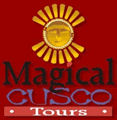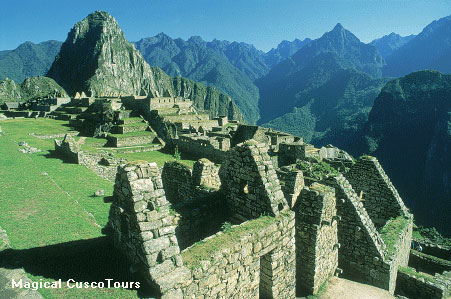 |
| Click On This Photo For Professional High Quality Peru Tours From Magical Cusco Tours Just Mention delange.org With Code Inka2010 Get A 4% Tour Discount With Any Package Tour Purchase! |
|---|
The Sacred Valley Of Peru
Travels And Tours
Pictures, Photos, Images, & Reviews.
Page One
George & Eve DeLange
 |
| Map Of The Sacred Valley Of Peru. |
|---|
Google Map To The Sacred Valley Of Peru. Centered On Urubamba, Peru.
View Larger Map
The Sacred Valley of the Incas was a key settlement of the Inca Empire. Its good climate and fertile plains made a rare and fruitful combination in the high Andes. It was also the route to the jungle and therefore an area with access to the fruit and plants of the tropical lowlands. The Sacred Valley also served as a buffer zone, protecting Cusco from incursions of the Antis, the fierce jungle tribes who occasionally raided the highlands. The Sacred Valley lies 27 km (1 hour drive) northeast of Cuzco and can be reached by a well-paved road. This valley stretches the length of the Vilcanota River (further downstream it is called the Urubamba or Willcamayu). The valley lies between the towns of Pisac and 0llantaytambo. It is possible to reach the valley by three paved roads. A succession of picturesque villages (some with splendid colonial churches), terraces and other Inca archaeological sites, as well as sweeping farmlands planted with sweet corn, make a visit to this valley a must do for all those who come to Cuzco. Tourist activities in the area include mountain climbing on snowcapped Mount Chicon and Mount Wakay Willca �which form part of the Mount Veronica Mountain Range� and Pitusiray, Sawasiray, Terijway and Sunchubamba (all peaks in the Vilcanota Mountain Range, topping 5 000 masl); trekking, whitewater river-rafting (along stretches of the Pisac-Calca-Huaran-0llantaytambo); horseback-riding and mountain biking. In the towns along the valley there are several hotels and restaurants that serve local food. Because of the quality of its soil, the good climate, the richness of its flora and fauna, and its exceptional beauty, the Valley was granted special privilege and was called sacred by the Inca or �Son of the Sun.� It was held to be a territory that does not belong to any of the provinces of the Tawantinsuyo Empire. And the Sacred Valley was considered the personal holding of the Inca Rulers, and was built upon as a direct extension of the city of Cusco. Garcilaso (1607), said this: "That valley has more advantages than all the others that are in Peru, and for that reason the Inca Kings ever since Manco Capac, who was the first, right up to the last of them had it as their garden and the place of their delights and recreation... the skirts of the mountains are rich in abundant pastures and full of deer, bucks, guanacos, and vicunas, and partridges and many other birds, although the squandering and wastefulness of the Spanish have already nearly destroyed all that was good hunting..." The most common way that people visit the Sacred Valley is as part of an organized one-day tour. The tour usually includes a visit to the market at Pisac, a stop for lunch in Urubamba, a visit to the beautiful Inca village and fortress of Ollantaytambo and a quick stop at the quechua village of Chinchero on the way back to Cusco. We chose instead; to drive to Ollantaytambo, by way of Poroy Town. And to spend two nights in Ollantaytambo at the wonderful Pakaritampu Hotel, in the heart of the Inca's Sacred Valley.We considered it an ideal starting point because it is located at a lower altitude; it is situated just a few meters away from the train station and a PERUrail train that will take only one hour and a half to reach Machu Picchu; and the starting points of the Inca trails. ***: 0llantaytambo located at 9022.20 feet elevation. 0llantaytambo is located in the far western corner of the Urubamba Valley, 78 km (90 minutes drive) north-east of Cuzco along a paved road. The town was named after the legendary rebel Inca General 0llantay. Both the design and foundations of most of the buildings date back to the original constructions (llaqta) of the Inca Empire. The streets still have their Inca names from the time when the town was a strategic military, religious and agricultural center. Some of the town's most salient characteristics are its cobbled streets, canals and a church dedicated to the Apostle Santiago, built in 1620. In the upper reaches of the town there is an impressive Ceremonial Center built for the worship of water, and a fortress that guarded the lower section of the valley, protecting it from possible invasions by warring jungle tribes (called Antis). The archaeological site is a series of superimposed terraces, reached by a steep staircase. The ruins feature finely carved, vast stone blocks that make up the upper terrace or Temple of the Sun. The mountain located in the eastern sector of the town, known as Pinculluna or Tunupa, also features the remains of Inca buildings that were apparently used to store food. After Manco Inca was defeated by the Spanish at Sacsayhuaman following the unsuccessful siege of Cusco (1536) he retreated to Ollantaytambo. Francisco Pizarro's younger brother Hernando led a force of 70 cavalry, 30 foot soldiers and a large contingent of natives to capture Manco Inca. The Inca's forces, joined by neighboring jungle tribes, rained down showers of arrows, spears and rocks upon the unfortunate Spanish troops. In an intelligent move the Inca's flooded the plains below their stronghold making it difficult for the horses to maneuver. Hernando, uncharacteristically, ordered a hasty retreat. Ollantaytambo became the only place ever to have resisted attacks from the Spanish. However, their victory was short-lived when the Spanish returned with four times their previous force. Manco Inca retreated to his jungle stronghold in Vilcabamba and Ollantaytambo fell into the hands of the Spanish. Naming Of Ollantaytambo; Story Of Ollantay and Ollantaytambo: According to the chroniclers, among them Sarmiento de Gamboa (1572), the village of 0llantaytambo was named after the legendary cacique from the region, 0llantay, who was also a General in the Inca army. It is said that 0llantay fell hopelessly in love with Cusicoyllur ("Happy Star" in Quechua), the daughter of Inca Pachacutec. The Inca Pachacutec, in disagreement with 0llantay's brave declaration of love for his daughter expelled 0llantay from the region and into punishment. 0llantay, then Chief of the village Tampu, rebelled against Pachacutec, successfully resisting the Imperial army until he was deceived and captured by the Inca Chief Rumi Nawi. Practically on the eve of his execution, 0llantay escaped. The new Inca, Tupac Yupanqui, pardoned 0llantay, returning him to his position as General and leader of Tampu, whose name was then changed to 0llantaytambo. The ruins are open to the public from 7:00 AM to 3:30 PM. 0llantaytambo has several breakfast inns and restaurants, making it an ideal place to start a tour of the valley. The trains to Machu Picchu stop here, which is why many tourists prefer to get off the train and return to Cuzco by bus (usually quicker.) The town is also a meeting place for peasant farmers from nearby villages, including the huayruros from Willoc, with their colorful ponchos and hats that make them resemble the huayruro, the red-and-black seed commonly used as a good-luck charm. The major festivals include Carnival (January 6), the 0llanta Raymi (the Sunday following Inti Raymi), and the Lord of Choquequilca, 0llantaytambo's most important festival, (June 11). The Lord of Choquequilca is a religious feast day that commemorates the finding of a sacred wooden cross floating in the Vilcanota River. We were at the Sacred Valley on the afternoon of April 14, 2006 through the early morning of April 16, 2006.
This page is for information purposes only and while we have made every effort to be accurate, it is the travelers responsibility to make the appropriate choice as to which hotels to use in Peru. We have links to Magical Cusco Tours on our page so that they can arrange your tours of the Sacred Valley and the surrounding areas. We found that when touring Peru, Magical Cusco Tours gave us the best service of all. They even arranged very personal tours based upon our ages and experience. They were there for us whenever we needed them. Click on any of their links on our pages and they will give you a 4% discount for taking their package tours. Mention delange.org. Merchant Code Inka2010 for your discount! We suggest letting Ana Maria handle your tour. Note: The 4% discount applies to package tours only! Discount does not apply to hotel bookings, domestic or international tickets, meals or any other service booked as a single activity.
Magical Cusco Tours also has a culinary tour that you may enjoy.Click Here For: Taste Of Peru.com their culinary tour page.
We also have links to Priceline.Com on our pages, in case you may prefer to use their services.
|
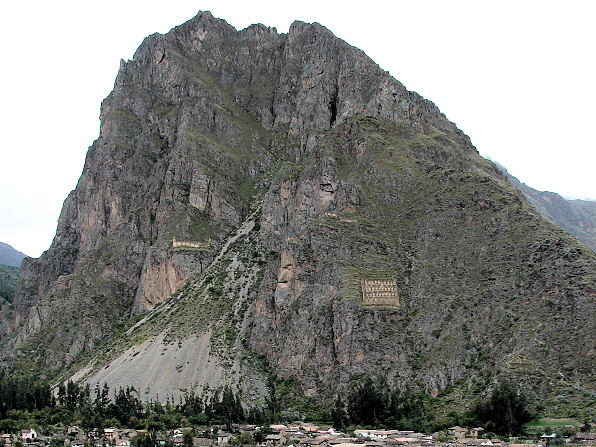 |
| The God Tunupa On The Pinkuylluna Mountain Keeps a Stern Eye Over The People Of The Village Of Ollantaytambo. |
|---|
 |
| Close Up Of The God Tunupa, Or Viracocha He Has A Temple Upon His Head As A Crown! |
|---|

We're Glad You Stopped By! Come back soon!
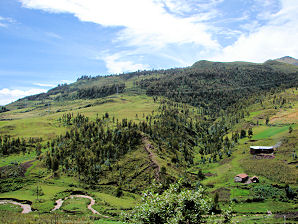 | 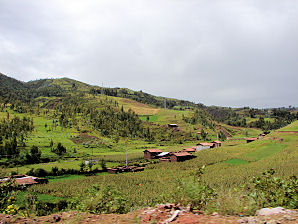 |
| We Leave Cusco And See Very Beautiful Scenery | We Leave Cusco And See Very Beautiful Scenery |
|---|---|
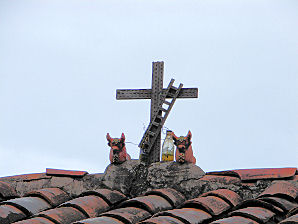 | 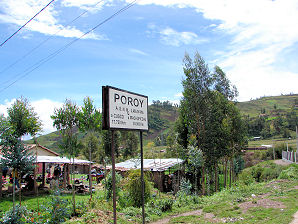 |
| Toritos Along The Way Bring Good Luck! | Entering Poroy Town |
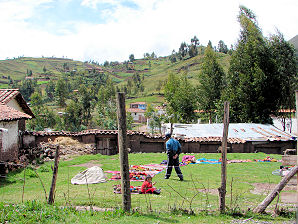 | 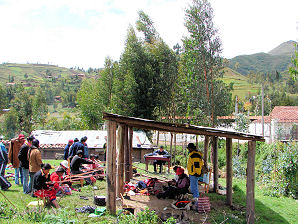 |
| Poroy Town Peruvians making Tourist Goods | Poroy Town Peruvians making Tourist Goods |
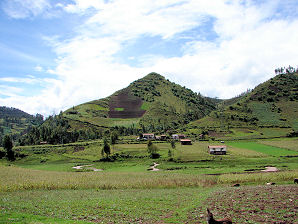 | 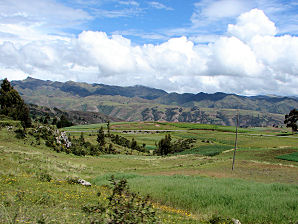 |
| Leaving Poroy Town | We See Fields And Mountains Everywhere |
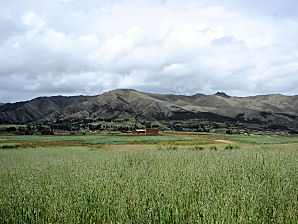 | 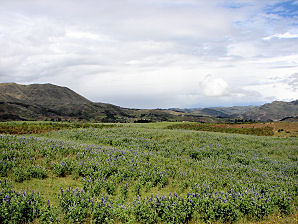 |
| Fields Of Barley | Fields Of Tarwi Or Lupine |
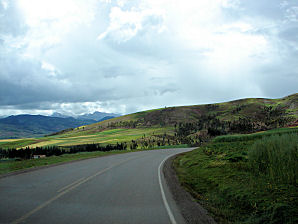 | 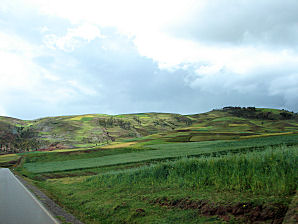 |
| Terraces & Fields Everywhere | Terraces & Fields Everywhere |
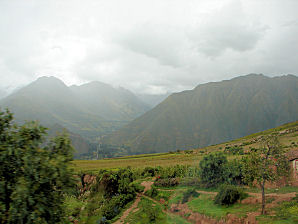 | 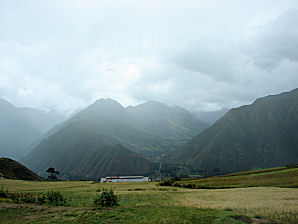 |
| The Sacred Valley Lays Ahead | The Sacred Valley Lays Ahead |
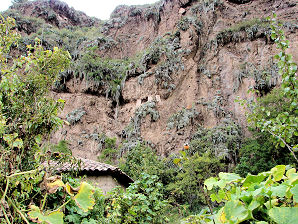 | 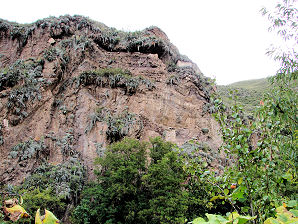 |
| Sacred Valley Tombs | Sacred Valley Tombs |
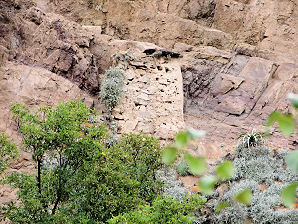 | 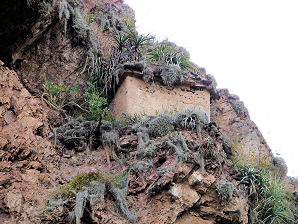 |
| Sacred Valley Tombs | Sacred Valley Tombs |
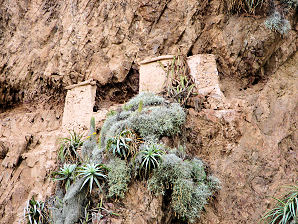 | 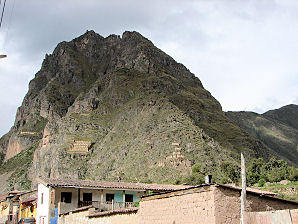 |
| Sacred Valley Tombs | We Enter Ollantaytambo And See Ruins On Pinkuylluna Mountain |
We Are Proud Of Our SafeSurf Rating!

Click On Any Of The Following Links By Amazon.Com
For Books About Hiking Or Touring In Peru.
Some Are Must Have Books - If You Are Going To Peru.
We Also Are Including Some Great Music CD's & DVD's. No Obligation!
Click Here To Tour Ollantaytambo Ruins
Back To Peru Home Page
Back To DeLange Home Page





